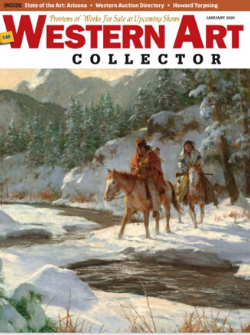 Western Art Collector
Western Art Collector
James D. Balestrieri
The art world, especially the Western Art world, is riddled with stories. Tall tales, windies, rumors, apocrypha—call them what you will. When you work for an old gallery, like J.N Bartfield in New York, every drawer, every bin, every letter, yellowed and faded with time, is fairly saturated with the dust of story. And so, when I recently traveled to Tulsa, to spend some time with Laura Fry, senior curator at the Gilcrease Museum, to hear about the impressive expansion that is about to begin there—and to gather impressions for this article—I went with a story of my own.
As the murmurs of amazement from school groups on field trips echoed against the high ceilings in Helmerich Hall, I stood with Fry at the top of a flight of steps and told the story of how, in 1944, Jack Bartfield had been in the running with Thomas Gilcrease and others to purchase the collection of Dr. Philip G. Cole, a prominent collector of Western art who had known both Remington, Russell and many of the Taos artists and owned some of their greatest works. As the story goes, bidding was to close at a certain hour on a Friday. Bartfield’s bid was higher than Gilcrease’s, but Bartfield’s lawyers had arrived minutes after the deadline, so Gilcrease won out. Bartfield was understandably upset, but said he’d rather lose out to a museum than another dealer. Fry added her layer to the tale, saying that Gilcrease was said to have opened one box, seen that it was filled with paintings by Joseph Henry Sharp and placed his bid, saying, “I’ll take all of it.” It was 636 works of art, plus manuscript and archival material. Bartfield’s has a copy of Cole’s list. I’ve seen it. Now that’s how you build a museum. Cole resided in Tarrytown, New York. His house can’t be more than 10 minutes’ walk from my home. Do I dream of stumbling across some masterwork of his that somehow slipped away from the Cole estate and Gilcrease? What do you think?